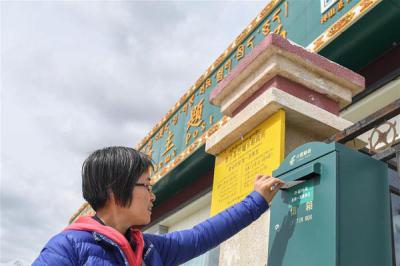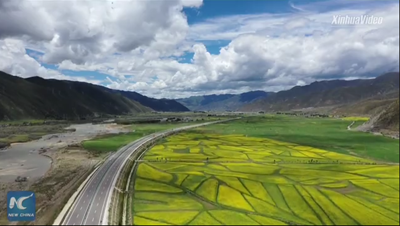Impact of Silk Road :Tibet and India
(India) Navin Chandra Lohani
The earliest sources we have for India's role in the trade and polity are from the Han dynasty. The flow of literature, knowledge, beliefs and culture was an important aspect. India and China enjoyed a rich past wherein trade from current day Bangladesh to Spain was possible due to this channel. Travellers from Europe were mesmerised by the intellectual and cultural exchange hubs along the Silk Road, many of which developed into hubs of culture and learning. Science, arts and literature, as well as crafts and technologies were thus shared and disseminated into societies along the lengths of these routes, and in this way, languages, religions and cultures developed and influenced each other. Religion and a quest for knowledge were further inspirations to travel along these routes. Buddhist monks from China made pilgrimages to India to bring back sacred texts, and their travel diaries are an extraordinary source of information.
Discussing Sino-Indian cultural interaction a question often looms that there must be a starting point for this exchange. It could be established from records that Sino-Indian interaction was always a two-way channel and the two elements of this exchange could be categorized as material exchange and spiritual cultural exchange. This two-faceted exchange was carried through the following routes of communication:
1. The Central Asian Route or the Silk Route,
2. Assam-Burma and Yunnan Route or the famous Southern Silk Route,
3. Tibet Nepal Route, and
4. The Sea Route or the Maritime Silk Rout
India’s most important contribution to China’s silk road came via maritime trade wherein India’s eastern coast played its part to connect this global trade network. Perhaps the most lasting legacy of the Silk Roads has been their role in bringing cultures and peoples in contact with each other, and facilitating exchange between them. Cultural interaction was a vital aspect of material exchange. Moreover, many travellers ventured onto the Silk Roads in order to partake in this process of intellectual and cultural exchange that was taking place in cities along the routes. Knowledge about science, arts and literature, as well as crafts and technologies was shared across the Silk Roads. One of the most famous technical advances to have been propagated worldwide by the Silk Roads was the technique of making paper and printing press technology.
India and China were close knit cultures and did not partake open interaction with foreign bodies but the power of dialogue and discourse is such that it can mould cultures, knowledge, opinions and achieve goals that seem difficult initially. The silk road flows from Tibet into neighbouring states in India and still has vast similarities and effect on each other. Hence, the modern days issues that either of the countries are facing can not only be solved by dialogue and discourse but can also strengthen the thousands of years of exchange that both countries have facilitated with each other.
Navin Chandra Lohani, India
Hindi Professor of Shanghai International
Studies University
|
- Home
- News Tibet |Exclusive |China |World |Other Tibetan-Inhabited Area |Tibet through the Eyes of Foreigners |Related News
- Documents White Papers |Others
- Photo Politics |Economy & Society |Culture & Religion |Human & Nature |Beautiful Tibet |Other Tibetan-Inhabited Area |Exchanges |Related
- Video News |Documentary |Micro-Video |Entertainment
- Art
- Tourism
- In Focus
- About Tibet






